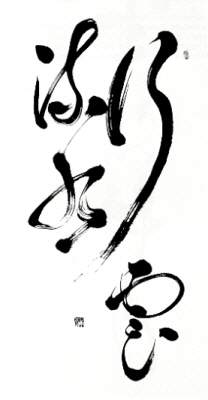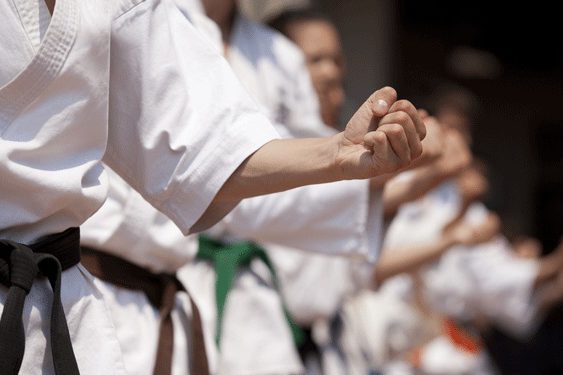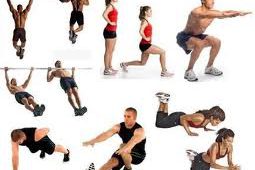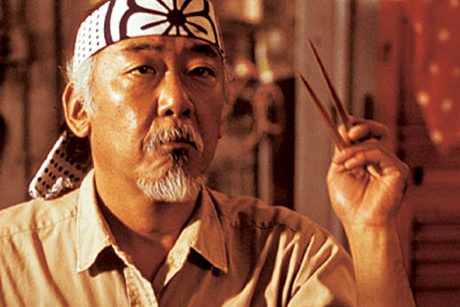Let’s talk a little Japanese.
There is something that the Japanese call “yojijukugo” which I find really interesting.
Yojijukugo means something like “four character idioms” and are, like the name suggests, phrases or sayings that involve only four kanji (Japanese characters). Japanese students formally study these four-character compounds from junior high school, and later struggle with the more obscure ones on exams for university entrance.
There exists a very large number — perhaps tens of thousands! — of yojijukugo. Some of these “four-kanji sayings” are surprisingly similar to equivalent English expressions though. For example, Ichi Seki Ni Cho (one-stone-two-birds) which simply means “To kill two birds with one stone”.
Who hasn’t heard that one?
In Sweden we say “To kill two flies with one swat” but the maning remains the same.
Other common Japanese yojijukugo includes:
- Ichi Kaku Sen Kin (one-grasp-thousand-gold) = making a fortune at a stroke
- Yo To Ku Niku (sheep-head-dog-meat) = crying wine and selling vinegar
- Sui Sei Mu Shi (drunken-life-dreamy-death) = idling one’s life away
- Shin Sho Bo Dai (needle-small-pole-big) = making a mountain out of a molehill
- Mi Ka Bo Zu (three-day-monk) = somebody who starts projects and never finishes them
You get the idea.
(I didn’t write the Japanese signs because not everyone can see them in their web browser.)
Now, the fascinating thing with these expressions are that they are more than the sum of their parts. Sometimes you really need to use your imagination to understand a yojijukugo! Maybe you already noticed that…
Anyway, today I have chosen a special yojijukugo that I will talk about. I think it relates to Karate and Kobudo really well.
Ready?
Here it is:
Ko Un Ryu Sui.
It is so simple. Almost childish. You need only have studied a little Japanese to even be able to write/read this one for yourself. Here is the translation:
go-cloud-flow-water
Go… cloud… flow… water?
Sounds simple enough.
But what does it mean? It kind of looks like it has no real meaning, right? Like something a small child would say? Don’t worry, it makes no sense to most Japanese either. And it doesn’t get easier when it’s masterfully brushed like this:

It’s beautiful though.
And it really brings forward the meaning of Ko Un Ryu Sui.
But what is the meaning? And what has “go-cloud-flow-water” got to do with Karate or Kobudo anyway? Hmm… Let’s do like this: I will tell you about something in Karate, and you will have to make the connection to this yojijukugo (four-character idiom) yourself, okay?
Here we go:
In Karate, I believe being natural is something really important. And no, I’m not talking about things like farting or burping during class, I mean acting natural when doing techniques.
Natural actions.
Natural responses.
In kata, kihon and kumite.
I believe natural movements can be divided into two parts:
1. Movements that come instinctively
If I were to build my own self-defense system, this is what it would be based upon. I mean, if you quickly need to learn self-defense, why not base it on the bodys own natural, instinctive, actions and reactions. Here’s a great example:

This is the normal reaction for anyone, anywhere in the world, when protecting themselves. Hands up, palms in, chin down, knees together. Eyes closed.
When everything else fails, the body will do this.
For instance, if you watch MMA, then you have probably seen a fight were one fighter is overpowered by the other, and despite his years of hard training and drilling, he finally responds by lying on the floor in fetal position, protecting him just like this.

It’s natural.
And it will never disappear, no matter how many layers of training you hide it under.
Yet, we have never trained this protecting movement! We were not drilled in kindergarten to do this. Still, everyone knows how to defend themselves like this. It seems our bodies possess a natural instinct for self-preservation. Sounds logical, right?
So why not tap into that power for the sake of self-defense?
This is the first type of natural movements.
Here’s the next:
2. Movements that conform to the body’s natural way of moving
While acting natural, as in #1, certainly proves useful, ultimately we must – as martial artists – strive to act and react in ways most people would not.
We do not train hour after hour, only to fight as if untrained!
Am I right or am I right?
However, this in no way denigrates instinct-based techniques (#1). On the contrary, for the development of truly quick and effective self-defense, they are of immeasureably value. Yet, as trained martial artist, we in the end, strive for moving far beyond the instinctive motions to which most “normal” people remain constrained.
Of course this takes time. Lots and lots of practice.
But that’s why we train.
So what do I mean by “movements that conform to the body’s own natural way of moving”? Well, let’s take one of my favorite examples:
Gedan mawashi-geri – the low roundhouse kick
Here is what it should look like (okay, it’s not the best example, but still):

This is not unnatural for your body.
You do not break any bones or rip any tendons/joints by doing this movement – it is natural.
(Although we once had a beginner bust his kneecap badly when doing this kick – he forgot to rotate the supporting leg.)
But… ask somebody on the street to do a low kick on you, and they will never do it like this. For instance, I recently held a self-defense class for some ice hockey players, and when we did this kick, only 10% of the players could do it correct on the first try. Most did it like some kind of sideways soccer kick (like a low mikazuki-geri)
But after some instruction, almost everyone could do it. They almost kicked the stuffing out of the pads!
Because it is natural.
However, it is not instinctive.
——
Okay, so now I have described two types of natural movement that we have: Movements that come instinctively (#1) and movements that conform to the body’s natural way of moving (#2). If you have read thoroughly, you have probably guessed that the best system is a combination of these two.
Now… over to the original question.
What is the meaning of this:

Ko Un Ryu Sui.
Go, cloud, flow, water.
Well, don’t look at me. I’m not going to spell it our for you.
I was kind of hoping you would have figured it out by now.
“Choose only one master – Nature.”
– Rembrandt



5 Comments